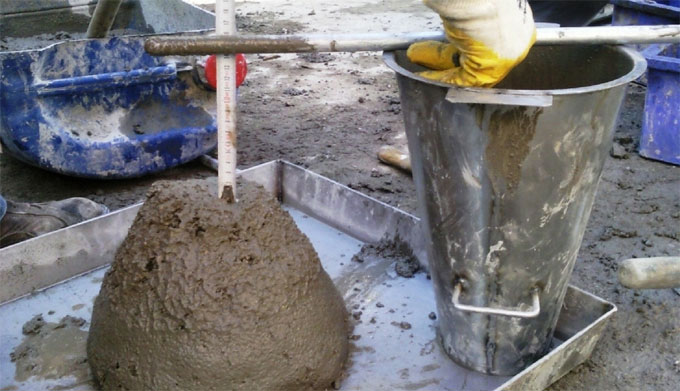
How to Conduct Slump Test for Fresh Concrete?

Before placing the concrete in the site, it is important to measure the properties of fresh concrete. Tests are carried so as to make sure that the properties which are required are present in the fresh concrete which in turn influences the strength and durability of the structures.
Since different concretes are used in achieving different concrete mixtures. As a result of which the properties of fresh concrete depend highly on the kind of concrete that is to be used in the structure. The most important properties of fresh concrete are:
? Workability
? Temperature
? Setting
? Segregation of the concrete
? Plastic shrinkage on the concrete
? Thermal shrinkage and thermal expansion on the concrete
? Water cement ratio
Workability is one of the most important properties of fresh concrete for all kinds of concrete. Workability is the ability to work easily with a concrete where it can be poured into the mold and compacted to form the desired shape without any kind of segregation or defects and with the required strength and lifespan. Defects and cracks arise when there is a high amount of moisture present which is more than that designed due to thermal shrinkage.
The workability of concrete can be pointed out using these three tests- slump test, compacting factor test and V-B test. The slump test is usually favored in the site so understand the consistency of the fresh concrete as performing this test is very low cost and requires low labor skills. The slump test is performed when the concrete is absolutely fresh at the site as soon as the concrete truck arrives with it.
It is in accordance with ASTM C143 in US and EN 12350-2 in Europe that the slump test is performed. Other countries have their own defined slump test procedure according to their own standards.
The General Process for Slump Test
The slump cone must be kept on a clean tray after cleaning it. After which the concrete is poured into the cone in three layers where each layer should be able to compact for 25 times using a tamping rod. After the top level is filled, the top surface must be smoothened and then the cone should be lifted in the vertical direction.
The concrete is then left to slump, after the slumping process the slump is measured. Depending upon the concrete mixture the slump used in site will differ with a tolerance of 20mm or of appropriate values.


